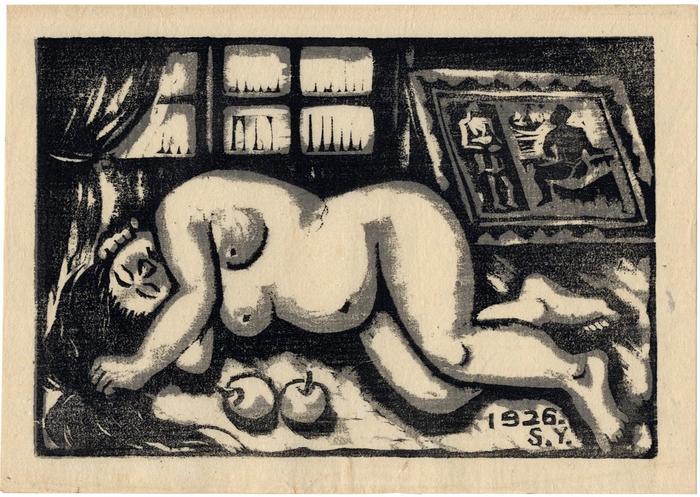Yamaguchi Susumu (山口進) (artist 01/25/1897 – 11/25/1983)
Links
Biography:
In 1920 Susumu Yamaguchi moved to Tokyo. There he studied with Kuroda Seiki and at the Aoibashi Western Painting Institute. Already in 1920 he exhibited with the Nihon Sōsaku-Hanga Kyōkai, and in 1928 he became a member. He was a founding member of the Nihon Hanga Kyōkai, and he contributed to many hanga magazines before WWII.
From printing with oil-base paints he changed to water-base paints. In 1945 the carpet bombings of Tokyo forced him to return to Nagano prefecture, where he had been born. He became a farmer, making and exhibiting prints at the same time.
****
The curatorial files from the British Museum say: "Print artist. Yamaguchi was born in Nagano Prefecture and remained devoted to the mountains all his life. As a boy he taught himself woodblock printing. He went to Tokyo in 1920 and until 1922 studied Western-style painting, when he began to work as an art teacher and school counsellor and also tried running a hostel for impoverished men from the country. He exhibited at many different sorts of exhibitions (oil-paintings, water-colours, cartoons, prints), but from 1920 was already being accepted for the Creative Print Association shows and contributed to a number of 'Sosaku Hanga' magazines. Forty-nine of his prints were chosen for the Paris exhibition of 1934 and sold very well. This determined him to specialise in prints from then on. He was evacuated at the very end of the Pacific War back to his home district, where he remained and took up farming, continued producing prints, and was very active in the promotion of local art education. His prints of the mountains proved very popular with foreigners, especially after he was featured in Statler's 'Modern Japanese Prints: An Art Reborn' (1956). His views of mountains have some similarities to those of his close friend Azechi Umetaro (q.v.) but are more forbidding. His technique was characterised by very dense colours achieved by repeated printings on thick paper, using much water."
They list a bibliography:
Smith, Lawrence, 'Modern Japanese Prints 1912-1989: Woodblocks and Stencils', BMP, London, 1994, p. 35 and no. 9.
Merritt, Helen, and Yamada, Nanako, 'Guide to Modern Japanese Woodblock Prints 1900-1975', University of Hawaii Press, Honolulu, 1992, p. 139.
Kamon, Yasuo, Tozaka, Koji, and Asahi, Akira, 'Shin Tokyo hyakkei', Heibonsha,
Tokyo, 1978, pp. 60-4 and reproductions there of all his contributions to 'One Hundred New Views of Tokyo'.
